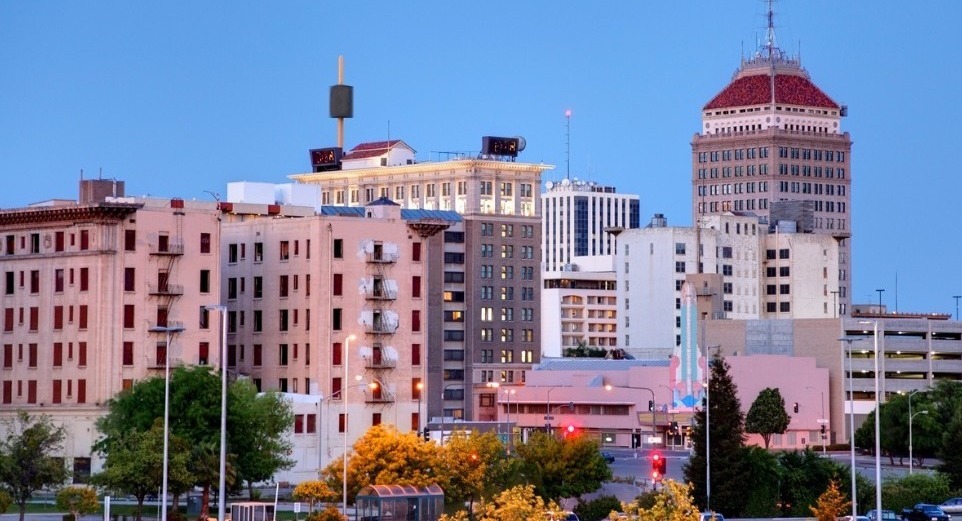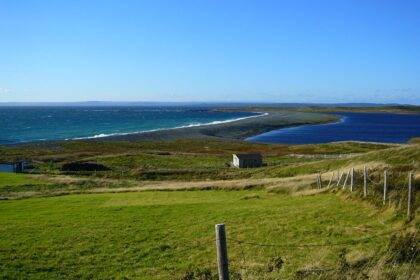Fresno (Spanish for “ash tree”) is a major city in the San Joaquin Valley of California. Take a look below for 20 fascinating and awesome facts about Fresno, California, United States.
1. It is the county seat of Fresno County and the largest city in the greater Central Valley region.
2. Fresno covers about 112 square miles (290 km2) and had a population of 542,107 in 2020, making it the fifth-most populous city in California, the most populous inland city in California (the Sacramento metro area has many more people than Fresno but the city proper has only 524,942 people), and the 34th-most populous city in the nation.
3. Named for the abundant ash trees lining the San Joaquin River, Fresno was founded in 1872 as a railway station of the Central Pacific Railroad before it was incorporated in 1885.
4. The city has since become an economic hub of Fresno County and the San Joaquin Valley, with much of the surrounding areas in the Metropolitan Fresno region predominantly tied to large-scale agricultural production. Fresno is near the geographical center of California.
5. It lies approximately 220 miles (350 km) north of Los Angeles, 170 miles (270 km) south of the state capital, Sacramento, and 185 miles (300 km) southeast of San Francisco. Yosemite National Park is about 60 miles (100 km) to the north, Kings Canyon National Park is 60 miles (100 km) to the east, and Sequoia National Park is 75 miles (120 km) to the southeast.
6. Fresno is also the third-largest majority-Hispanic city in the United States, with 50.5% of its population being Hispanic in 2020.
7. The original inhabitants of the San Joaquin Valley region were the Yokuts people and Miwok people, who engaged in trading with other Californian tribes of Native Americans including coastal peoples such as the Chumash of the Central California coast, with whom they are thought to have traded plant and animal products.
8. The first European to enter the San Joaquin Valley was Pedro Fages in 1772. The county of Fresno was formed in 1856 after the California Gold Rush. It was named for the abundant ash trees (Spanish: fresno) lining the San Joaquin River.
9. The San Joaquin River flooded on December 24, 1867, inundating Millerton. Some residents rebuilt, others moved.
10. Flooding also destroyed the town of Scottsburg on the nearby Kings River that winter. Rebuilt on higher ground, Scottsburg was renamed Centerville.
11. In 1867, Anthony “McQueen” Easterby purchased land bounded by the present Chestnut, Belmont, Clovis and California avenues, that today is called the Sunnyside district. Unable to grow wheat for lack of water, he hired sheep man Moses J. Church in 1871 to create an irrigation system.
12. Building new canals and purchasing existing ditches, Church then formed the Fresno Canal and Irrigation Company, a predecessor of the Fresno Irrigation District.
13. In 1872, the Central Pacific Railroad established a station near Easterby’s—by now a hugely productive wheat farm—for its new Southern Pacific line. Soon there was a store near the station and the store grew into the town of Fresno Station, later called Fresno.
14. Many Millerton residents, drawn by the convenience of the railroad and worried about flooding, moved to the new community. Fresno became an incorporated city in 1885. By 1931 the Fresno Traction Company operated 47 streetcars over 49 miles of track.
15. In 1865, William Helm brought his sheep to Fresno county, which was then a vast space of open land
16. By 1877, Helm made Fresno his home with a five-acre tract of land at the corner of Fresno and R streets. Helm was the largest individual sheep grower in Fresno County.
17. Two years after the station was established, county residents voted to move the county seat from Millerton to Fresno. When the Friant Dam was completed in 1944, the site of Millerton became inundated by the waters of Millerton Lake. In extreme droughts, when the reservoir shrinks, ruins of the original county seat can still be observed.
18. In the nineteenth century, with so much wooden construction and in the absence of sophisticated firefighting resources, fires often ravaged American frontier towns. The greatest of Fresno’s early-day fires, in 1882, destroyed an entire block of the city. Another devastating blaze struck in 1883.
19. In 1909, Fresno’s first and oldest synagogue, Temple Beth Israel, was founded.
20. Fresno entered the ranks of the 100 most populous cities in the United States in 1960 with a population of 134,000. Thirty years later, in the 1990 census, it moved up to 47th place with 354,000, and in the census of 2000, it achieved 37th place with 428,000.




